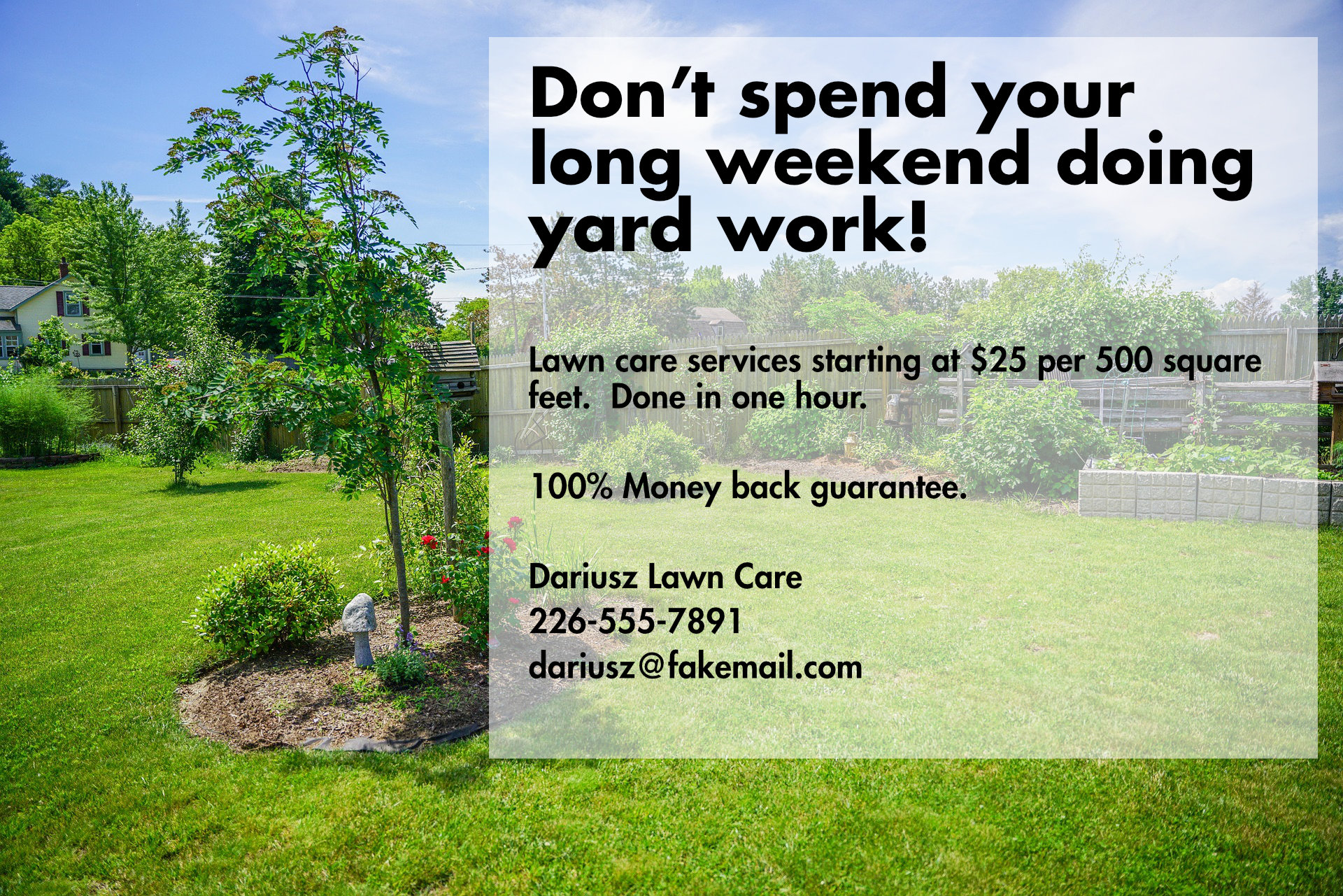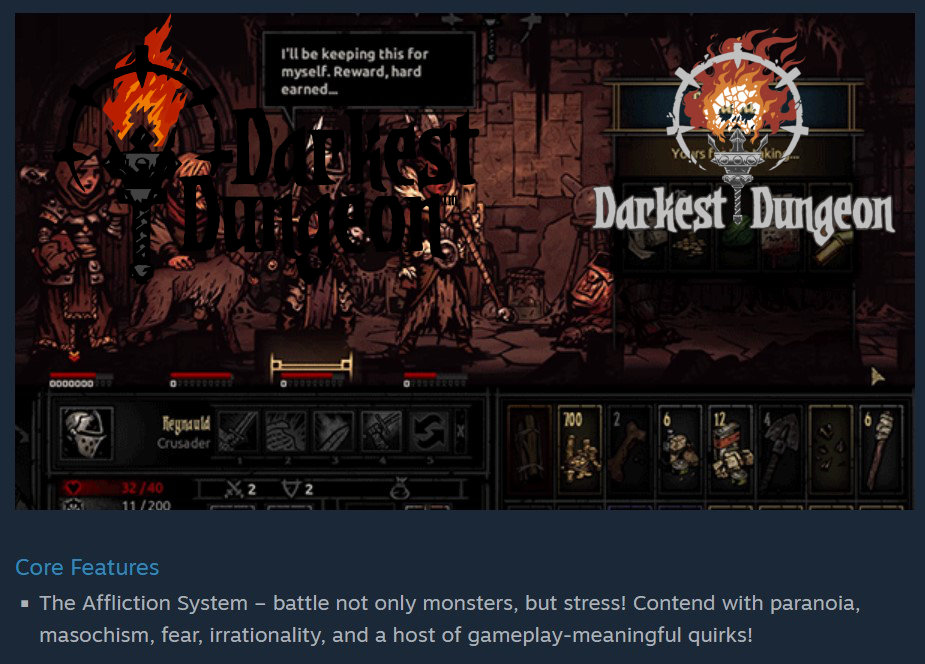Download: "Wishlist Workshop Part 3 Blueprint (PDF)" Here
How To Make Your Game's Features More Appealing
...so that your player goes, "Wow I Haven't Seen That Before!"
Indie Game Wishlist Workshop Part 3
This workshop is designed to help you increase your game's wishlist. Specifically, it's designed to help you find die-hard fans of your game and build your audience before your game launches. Because if you can attract like-minded people that love your game, you will increase your chances of selling more game copies at launch.
But the problem is, if a person lands on your Steam page, and doesn't know "what's in it for me" in less than 3 seconds, then you'll never attract die-hard fans.
And that's what marketing is all about... it's creating communications to attract your target and then letting them know "what's in it for me".
Marketing isn't about entertainment. It's not about trying to be creative. It's not to hype up your game. It's not about convincing anybody to buy. It's not about branding.
Yes, when your studio becomes bigger, then being entertaining, branding, hype, hard selling -- all of these are important BUT ONLY if you already have a customer base.
But not right now. Right now, when you're small and nobody knows about you yet, then marketing is all about putting your game in front of a person, and clearly telling them what your game is, and what the player will experience and feel when playing the game.
You see, small indie game marketing is all about getting THEM, your player, to convince themselves they want to buy your game. And it's all about building a genuine relationship with your prospective fans -- one by one.
So let's work on that right now. Let's get clear what your game is, and then figure out what the player will experience and feel when they play the game. Let's work on "what's in it for me". Let's figure out your game's biggest appeal.
And don't worry... later in this Workshop we'll work on how to get more traffic to your Steam page. But first, let's optimize your marketing message so that the player clearly knows what your game is... and let's figure out what's the most appealing part of your game -- and use that appeal to attract players.
So if you're a small indie game dev, with a niche game that is hard to sell, and you want more wishlists, then here's what you need to know, and what to do...
What Is Your Game's Appeal?
Like I mentioned before, in later Parts of the Wishlist Workshop we'll work on strategies to get more traffic to your Steam page.
But before we do that, we need to work on your game marketing. We need to figure out a way to communicate your game's features so when a player lands on your Steam page, they go...
"wow, I haven't seen that before!"
In other words: let's work on your game's appeal.
And let's work on making the experience of landing on your Steam page so memorable that the player WANTS to wishlist your game so they don't forget about you.
And that's the goal of getting wishlists: it's not about "growth at all costs" (like I mentioned in Part 2). It's not about getting as many wishlists as you can and hope you have enough.
It's about connecting with your target player, and building a genuine relationship with like-minded people. And the sole purpose of getting a wishlist is so that the player has an easy way to keep track of your game so that they don't forget about your launch date.
So how do you do that exactly?
Well, your best marketing asset is your game features. That's because your game's features are what make your game appealing to players.
But just showing off your features isn't enough. In fact, if you just talk about your features, it's going to make your game sound like all the other thousand of games in your genre. And that potential die-hard fan is lost forever.
To avoid losing potential fans, you need to clearly explain what your features are AND what the player will GET, experience, or feel when they use those features.
In other words, you need to show and tell them why your game is so appealing.
Let me show you exactly what I mean with a quick example...
Boring Features Vs Appealing Features
Let's just pretend the long weekend is coming up. And the last thing you want to do is yardwork. And you're thinking of hiring somebody to cut the lawn. And let's say you get two flyers in the mail:
The first flyer says:

And the second flyer says:

The first flyer basically explains the features (i.e. quality lawn care at a great price). But guess what? People EXPECT that with every lawn care. There is NOTHING appealing to these generic features.
It's the same with an indie game and its features. Say a game dev is making a turn-based, gothic, roguelike, RPG. But. But guess what? So what! These features aren't enough to get attention because a lot of games have those features. There's nothing appealing about just showing off game features.
Now let's move onto my second flyer. This flyer will sell more because it's less generic, and tells the person "what's in it for me". It clearly describes what the person will get, how much, and how they will benefit (i.e. somebody else cuts their grass while you enjoy your long weekend not doing any chores).
This is what good game marketing does too. For example, let's look at Darkest Dungeon. Yes, it's a gothic, turn-based, roguelike, RPG. But they went one step further, and clearly described in their marketing how the stress level of each hero increases with further exploration and combat.
And they called it, "The Affliction System". And if you watched my video about naming your systems, you know why naming your systems is so important.

But do you see what I mean when I say features aren't enough? You need to go one step further, and clearly show and tell a player "what's in it for me".
Why?
Because when you clearly describe what your game is, and what the player will GET, it's easy to see the appeal.
And remember, you only have 3 seconds to "sell" your game. And a player isn't going to do the mental work of trying to figure out "what's in it for me".
Just like in Darkest Dungeon. They clearly spelled out their "Affliction System" in all their marketing on their Steam page. They knew that players love this "stress system" and they leaned on this appeal hard in their marketing. This appeal helped them differentiate their game.
And more importantly, it made the player go:
"that's cool, never seen that before in this genre".
But here's the funny thing: this system where you have to manage stress is NOT new. The Expeditions series of games do this... and so does Xcom... and a lot more games as well.
My point is, Darkest Dungeon took an appeal a lot of gamers have (stress management), and they used that as their main focus in their marketing.
It's like my flyer example. When I say "I'll cut your grass for you so you can take the long weekend off"... that is a LOT more appealing than just saying "Darisz Lawn Services".
It's the same with what Darkest Dungeon did: they took something generic (stress systems), and made it more appealing by clearly describing what this system is and what the player gets to do.
Ok, there is a lot to unpack here. So let's get to work on creating your own "Affliction System". Let's work on finding that one cool appealing part of your game.
To do that, let's break down your game's features and try to discover your own unique system that will help you differentiate your game from all the others.
Because if you can clearly define what makes your game appealing, then when your target player lands on your Steam page, it will clearly show and tell them "what's in it for me". And this will make your game more memorable and will motivate that fan to wishlist your game so that they don't forget about you.
Ok, here's the step-by-step guide:
Wishlist Strategy: How To Make Your Game More Appealing
Ok, so for today let's work on your games appeal. And in this Part, we'll just work on organizing your game's best features. And in the next part, Part 4, we'll work on what your player will GET from each feature -- and try to discover your game's best appeal. But for right now, let's start slow, and get organized.
And again, the reason why you're doing all this work is because when a player lands on your Steam page, you don't want them to go, "oh, another generic indie game". You want them to go, "oh cool, never seen that before".
So let's work on that now... here's what I want you to do:
One Step Action Plan: Name 3 Features From Your Top Five Tags
Remember in Part 2, I had you come up with your Top 5 Steam Tags? Go open that document. Ok, good. Now, today what I want you to do is, below each Tag I want you to name 3 features.
Here, let me show you what I mean. As an example, here's my Top 5 Steam Tags, and below each Tag I wrote down 3 features...
***
My Top 5 Steam Tags
Tag 1: Indie
- Feature 1: Innovative gameplay
- Feature 2: Innovative art and theme
- Feature 3: Innovative story
Tag 2: Top-Down
- Feature 1: Grid-based movement
- Feature 2: Unique art and design
- Feature 3: Strategic and tactical play
Tag 3: Roguelite
- Feature 1: Procedural generation
- Feature 2: Permanent progression
- Feature 3: Permadeath with restart
Tag 4: Sci-fi
- Feature 1: Futuristic tech
- Feature 2: Space and alien worlds
- Feature 3: Scientific exploration and experimentation
Tag 5: Shooter
- Feature 1: Fast-paced combat
- Feature 2: Directional aiming
- Feature 3: Enemy waves and bullet hell elements
***
So go ahead and do the same. And to help you do so, you can download the Blueprint here:
Download: "Wishlist Workshop Part 3 Blueprint (PDF)" Here
And don't worry if your work isn't perfect. The idea here is to get organized first. So write down the first thing that comes to mind. And if you're having trouble coming up with 3 features for each Tag, then answer:
"what will the player get to do?".
Ok, great. Next, in Part 4 we'll turn your features so they don't sound boring and generic, and make them more exciting to players -- and get them to go: "cool, never seen that before".
So go open Part 3 Blueprint and fill it out, and I'll see you later in Part 4.
Need an affordable but professional website to help you attract potential players, streamers, or publishers?
Click the link below to find out what you get and how much...
Thanks for reading! Hope you got one insight to help you market your indie game and start growing your audience, and finding customers!

Dariusz Konrad
Email: dariusz at mainquestmarketing dot com
Discord Username: dariuszkonrad
LinkedIn: My entrepreneurial successes
Work: Game devs I've helped so far
